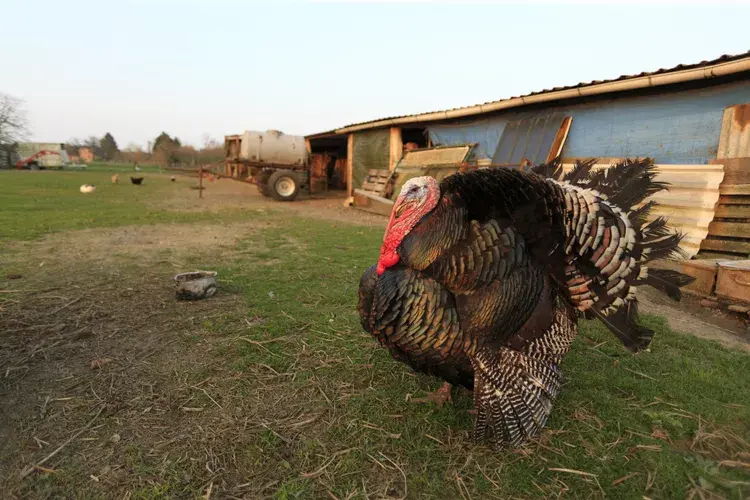Basic Requirements for Raising Turkeys Outdoors
Turkeys thrive outdoors and, once they reach eight weeks of age, can be kept on pasture nearly year-round. For the first several weeks, young poults need the warmth and safety of a brooder, ideally with access to a sun porch for natural light and fresh air. Once mature enough for the outdoors, they need access to a roosting area, fresh pasture, and sturdy protection from predators.
- Provide a weatherproof roosting area with a roof and elevated perches for overnight safety.
- Allow access to grass range or pasture for grazing and foraging.
- Ensure secure fencing to prevent escape and deter predators such as foxes and raccoons.
- Allocate at least a 75-by-75-foot space for up to 12 turkeys.
- Include dust-bathing areas, which are vital for turkey health.
Building and Moving Roosting Structures
A well-designed roosting area is essential. Turkeys instinctively seek high places to sleep at night. A simple 5×8 foot roost can comfortably accommodate around 20 turkeys, or you can build several smaller roosts spaced around your range area. Construct roosts from wood or electrical conduit, and mount them on skids or wheels for easy relocation. Moving roosts prevents manure from piling up and keeps your pasture healthier.

Perches should sit 15 to 30 inches above the ground. If you build them higher, add an angled ladder so turkeys can climb up safely. Top your roost with a lightweight metal or fiberglass roof panel to protect your flock from the weather. For lightweight structures, be sure to stake them down to avoid wind damage.
Fencing That Protects and Contains
Turkeys are capable flyers, so fencing should be at least four feet tall higher if possible. For temporary pasture fencing, electric poultry netting is effective and easy to move. Permanent pens can use woven-wire fencing on sturdy posts. Cover the tops with netting if escapes are an issue or if you need added predator protection.
Fence lines must sit flush to the ground and be sturdy, especially if predators are active in your area. Some keepers trim a wing to discourage turkeys from flying out, but most birds will stay put unless frightened. You can also graze turkeys alongside cattle, as they help improve the land by eating weed seeds and spreading manure.
Enclosures for Breeding and Brooding
Breeding turkeys require extra attention, especially in winter. A permanent turkey house, divided into separate spaces for toms and hens, keeps birds organized and minimizes stress during the breeding season. Let toms and hens out to pasture in turns and use feed to encourage them back inside.
Broody hens need a small, solid-sided pen or box within the main turkey house to hatch their poults safely. No matter the season, even breeding birds benefit from daily access to grass and pasture ideally, half their diet should come from foraged plants.
Summary: Best Practices for Turkey Housing and Fencing
- Start poults in a brooder, then transition to outdoor living after eight weeks.
- Give every turkey access to roosts with shelter and safe, secure fencing.
- Move roosts around the pasture to prevent waste buildup.
- Use fencing high enough to deter flight and strong enough to stop predators.
- Offer breeding birds winter housing and individual nest boxes for hatching.
With the right housing and fencing, turkeys are resilient, rewarding birds that can thrive on pasture and provide meat, eggs, or companionship while helping improve your land.
Keep Your Flock Safe, Comfortable, and Thriving
Raising turkeys successfully starts with smart, flexible housing and sturdy, well-planned fencing. Invest in these essentials, and your birds will reward you with robust health, steady production, and peace of mind.




